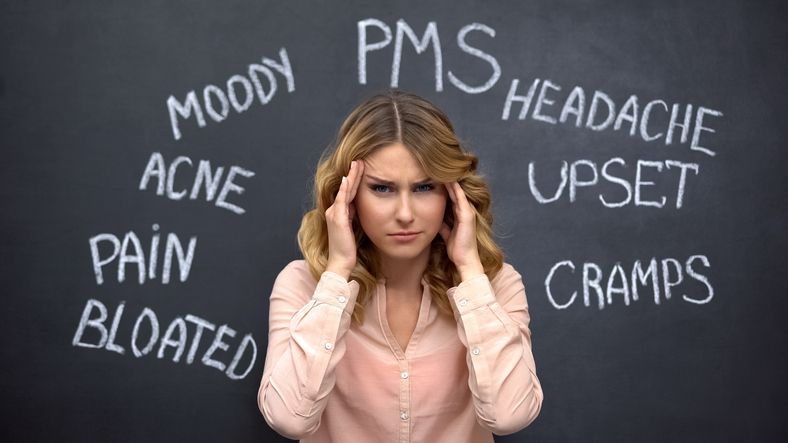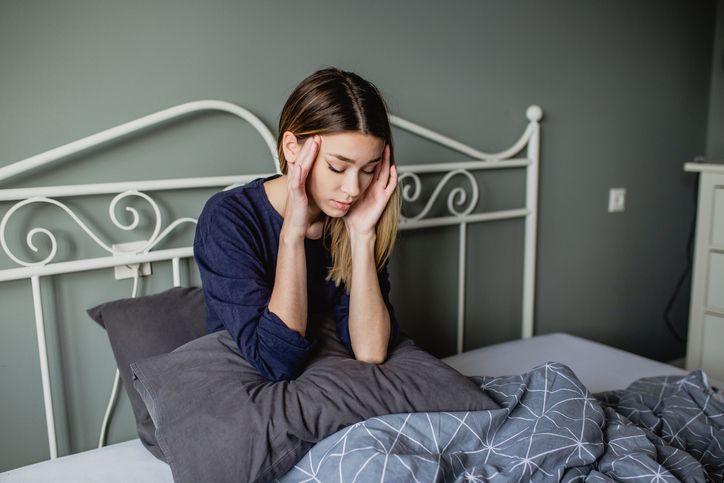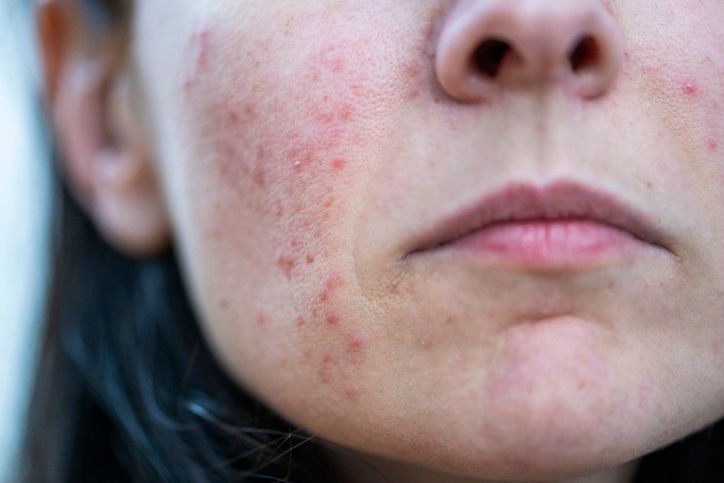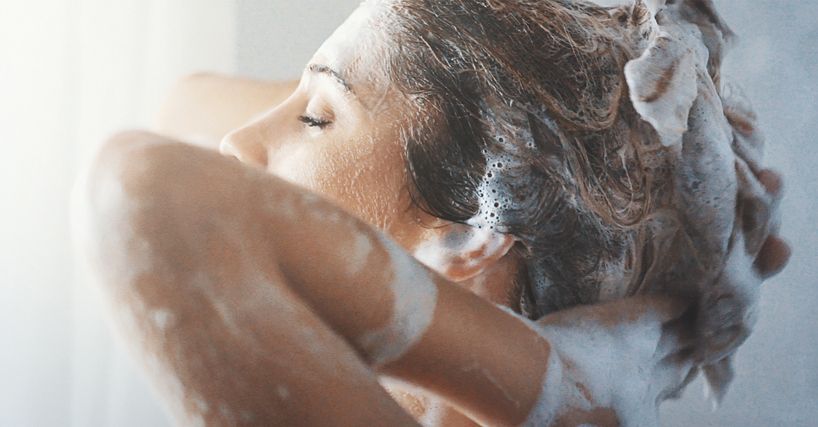Author: Natalie Ng|Updated: 17 June 2025
Still breaking out as an adult? It’s more common than you might think, and it’s not always about poor hygiene or a bad skin care routine. Adult acne can stick around or show up for the first time, due to a mix of things happening inside and outside your body. Hormonal changes, especially around your period or during times of stress, can throw off your skin’s balance. Late nights, certain foods, and even your go-to hair or skin care products might be making things worse. And sometimes, it’s not what you’re doing—it could be something like a health condition, your medication, or even family history. Adult acne doesn’t always look the same either. For some, it shows up as deep, painful lumps. For others, it’s persistent blackheads or clogged pores that just won’t clear. If acne tends to run in your family, or you’ve noticed flare-ups tied to your cycle or stress levels, there’s usually more going on beneath the surface. Keep reading to find out what could be causing your breakouts and how to treat acne in a way that actually works for your skin.

Adult Acne Reason 1: Hormonal Changes Trigger Breakouts

Hormonal fluctuations don’t stop after puberty. They remain one of the most common reasons adults continue to deal with acne, including hormonal acne that shows up around the chin and jawline.
Hormone shifts affect oil glands
Changes in estrogen, testosterone, or cortisol levels can increase excess oil production. This oily substance builds up in hair follicles and clogs pores, leading to acne vulgaris, painful lumps, or inflammatory acne. These breakouts often affect areas with more active sebaceous glands.
Menstrual cycle and stress influence breakouts
For many, acne flare ups follow a pattern. Breakouts may show up around the menstrual cycle or during periods of emotional distress. A disrupted sleep schedule or diet can also influence hormone levels and make acne worse by throwing off your skin’s natural balance.
Common triggers include:
• Irregular periods
• High stress levels
• Poor sleep habits
• High glycaemic index foods
• Sudden weight gain
Breakout patterns suggest internal triggers
Noticing breakouts at the same time each month or during stressful periods could point to hormonal changes or an underlying medical condition. Adult female acne is often linked to endocrine disorders like polycystic ovarian syndrome or side effects from birth control pills.
Medical support helps target the cause
Persistent acne or severe acne that doesn’t respond to regular acne treatment may need medical attention. A dermatologist or endocrinologist can help identify the cause and suggest an effective treatment, which may include:
• Hormone-regulating oral medications
• Changes to your acne treatment regimen
• Birth control pills (depending on your health profile)

Adult Acne Reason 2: Stress and Sleep Disrupt Skin Balance

Stress and poor sleep habits can make adult acne worse by increasing cortisol production, weakening the skin barrier, and triggering inflammation. These indirect effects create an environment where acne tends to form and linger.
Cortisol increases oil production
When stress is ongoing, your body produces more cortisol. This hormone signals your oil glands to release more sebum, which can clog pores and lead to acne breakouts. Cortisol also worsens inflammation, making skin more reactive and slower to heal.
The stress-cortisol-acne chain:
• Chronic stress raises cortisol levels
• Cortisol stimulates excess oil production
• Dead skin cells and oil clog pores
• Inflammation increases, worsening breakouts
Tension weakens your skin barrier
When you're dealing with pressure from work or daily life, the physical signs often show up on your skin. Cortisol not only increases sebum but also weakens your skin’s protective barrier. This allows acne-causing bacteria to penetrate more easily and delays the healing process of existing acne.
Your immune system also becomes less efficient, making it harder for your skin to defend against breakouts and inflammation.
Poor sleep slows skin repair
Your skin repairs itself most effectively at night, especially between 10 PM and 2 AM. If you're skipping sleep or staying up too late, your skin misses this crucial recovery window. That can result in:
• Slower healing of acne scars
• More visible inflammation
• Drier skin and increased sensitivity
• Breakouts that last longer
Late-night habits like using devices in bed can also disrupt your sleep-wake cycle, throwing off your hormone levels and making your acne worse.
Sleep-related acne triggers:
• Less than 7 hours of sleep per night
• Blue light exposure from screens
• Inconsistent bedtime routines
• Poor hydration before bed
Read More
Book Now to Experience
Acne Treatment
1 Minute Self-Registration
Date should not be before minimal date

Adult Acne Reason 3: Food Sensitivities and Diet Triggers
What you eat can influence how your skin behaves. Hidden food sensitivities often go unnoticed, but they may trigger inflammation that leads to persistent acne. These reactions don’t always show up immediately, making it harder to connect specific foods to breakouts.
Inflammatory foods worsen acne flare ups
Some foods can silently aggravate your skin by increasing inflammation, altering hormone levels, or disturbing your gut health. This can lead to clogged pores, excess sebum, and more acne over time—especially if you're already prone to adult acne or cystic acne.
Common dietary triggers include:
• Dairy products
• High glycaemic index foods (like white bread or sugary snacks)
• Gluten-containing foods
• Refined sugars
• Excess oily substances from processed snacks or fried foods
Even healthy foods can trigger breakouts in some individuals if there’s a food intolerance involved.
Food reactions affect your skin from the inside out
These reactions often cause subtle internal inflammation, which can show up as hormonal acne, pus filled lumps, or acne flare ups on the face, chest, or back. Unlike contact irritation or topical issues, diet-related acne stems from deeper processes, including the way your body handles insulin or processes certain proteins.
If your skin tends to worsen after eating certain meals—or breakouts seem random—your diet may be playing a bigger role than expected.

Adult Acne Reason 4: Skincare Habits and Product Issues
Your daily skincare routine plays a major role in how your skin looks and feels. But even with the best intentions, certain habits or ingredients can clog pores, irritate your skin, or make acne worse. If your routine isn't suited to your skin type or you're using the wrong products, adult acne can become harder to treat.
Harsh routines damage the skin barrier
Over-cleansing, scrubbing too hard, or using harsh exfoliants too often can strip your skin of its natural oils. This weakens the skin barrier, leading to dryness, inflammation, and more breakouts. Many people think more exfoliation means clearer skin, but aggressive routines often backfire.
Signs of over-exfoliation:
• Redness or shiny skin
• Burning or tingling sensations
• Increased sensitivity
• Acne flare ups after using scrubs or acids
Gentle chemical exfoliants like salicylic acid or lactic acid, used once or twice a week, are usually more effective and less irritating than physical scrubs.
Pore-clogging ingredients trigger breakouts
Many popular skincare products contain ingredients that clog pores, especially in adult acne-prone skin. Even products labeled for acne treatment can sometimes do more harm than good if they’re not non-comedogenic or tailored to your skin type.
Ingredients that can worsen acne:
• Mineral oil
• Silicones
• Heavy emollients
• Synthetic fragrances
• Harsh alcohols
Instead, look for oil free, fragrance-free, and non-comedogenic products with proven acne-fighting ingredients like benzoyl peroxide, niacinamide, or salicylic acid.
Irregular cleansing routines cause buildup
Your skin sheds dead skin cells, produces oil, and collects dirt throughout the day. If you skip cleansing or follow an inconsistent routine, this buildup can block hair follicles and lead to acne.
You should aim to:
• Wash your face twice daily—morning and evening
• Cleanse after sweating or working out
• Avoid sleeping with makeup on
• Use warm water and gentle cleansers
Book Now to Experience
Acne Treatment
1 Minute Self-Registration
Date should not be before minimal date

Adult Acne Reason 5: Health Conditions and Medications Cause Breakouts
Some breakouts go deeper than skincare or lifestyle habits. Underlying medical conditions and certain medications can lead to persistent acne by disrupting hormone levels, increasing oil production, or inflaming the skin. Even if your routine is flawless, acne may still appear if your body is reacting to internal changes or drugs you’re taking.
Hormonal disorders trigger acne from within
Conditions that affect your hormone levels can lead to excess sebum and clogged pores. This includes endocrine disorders and hormonal imbalances often seen in:
• Polycystic ovarian syndrome (PCOS)
• Thyroid imbalances
• Adrenal gland issues
• Irregular periods or excess hair growth
These conditions can make acne worse around the jawline, chest, or back, and may cause cystic acne or inflammatory acne that’s hard to treat with topical products alone.
Medications influence acne flare ups
Certain prescription drugs can lead to or worsen acne. These acne drugs may alter your body’s oil balance, affect your immune response, or cause inflammation that shows up on your skin.
Common medication-related acne triggers:
• Birth control changes or discontinuation
• Corticosteroids
• Lithium
• Medications containing androgens or anabolic steroids
Some of these drugs increase oil production by stimulating the sebaceous glands. Others may disrupt the skin’s natural balance, allowing acne-causing bacteria to thrive.

Adult Acne Reason 6: Skincare Mistakes That Worsen Breakouts
Your skincare routine should support your skin—not work against it. But many adults with acne-prone skin unknowingly make choices that clog pores, irritate the skin, or disrupt its natural barrier. These common mistakes often go unnoticed but can lead to more acne, especially when they become part of a daily routine.
Over-exfoliating damages the skin barrier
Exfoliation helps remove dead skin cells, but too much can irritate your skin and make acne worse. When you scrub too often or use harsh physical exfoliants, you damage the outer layer of your skin. This causes inflammation and can trigger more oil production, leading to clogged pores.
Signs you’re exfoliating too much:
• Redness or a shiny surface
• Sensitivity to other products
• Stinging or burning sensations
• More breakouts instead of fewer
Gentle chemical exfoliants like salicylic acid are better for acne-prone skin. Use them just 1–2 times per week and avoid using multiple active ingredients at once.
Pore-clogging ingredients in products
Not all acne products are created equal. Some contain ingredients that worsen acne by clogging pores or irritating the skin. Just because a product is labeled “acne-fighting” doesn’t mean it’s right for your skin type.
Ingredients to avoid in acne-prone skin:
• Mineral oil
• Silicones
• Heavy creams and balms
• Synthetic fragrance
• Harsh alcohols
Instead, look for non-comedogenic, oil free products with active ingredients like benzoyl peroxide, niacinamide, or salicylic acid. Test new products slowly and give your skin time to adjust.
Skipping cleansing disrupts your skin’s rhythm
Your skin produces oil and sheds skin cells throughout the day. When you skip cleansing, especially at night, you leave behind dirt, makeup, sweat, and oil that can block hair follicles and cause acne flare ups.
Cleansing tips for adult acne:
• Wash your face twice a day—morning and night
• Use lukewarm water and a gentle, fragrance-free cleanser
• Cleanse after sweating or exercising
• Avoid scrubbing or using rough towels
Book Now to Experience
Acne Treatment
1 Minute Self-Registration
Date should not be before minimal date

Importance of a Targeted Acne Treatment
Adult acne requires a different treatment approach than adolescent acne. A targeted acne treatment regimen addresses excess sebum, clogged pores, inflammatory acne, and hormonal triggers, helping reduce breakouts and prevent acne scars.
Ingredients that improve skin and treat acne
Specific ingredients work by removing dead skin cells, reducing inflammation, and preventing bacterial buildup in hair follicles. Your treatment choices should reflect your skin type, acne severity, and whether breakouts are related to hormone levels, sleep disruption, or medication side effects.
Effective acne treatment ingredients:
• Salicylic acid helps unclog pores and remove buildup
• Benzoyl peroxide targets acne-causing bacteria and inflammation
• Retinoids increase skin cell turnover to prevent blocked pores
• Niacinamide calms inflammation and supports the skin barrier
• Azelaic acid reduces post-acne pigmentation and irritation
Introduce new ingredients one at a time and monitor for reactions, especially if your skin is sensitive or inflamed.
Daily skincare routine that prevents breakouts
A regular acne treatment regimen helps reduce flare ups and improve overall skin texture. Inconsistent routines or overuse of harsh cleansers can lead to dryness, irritation, or more acne.
Suggested daily structure:
• Morning: gentle cleanser, oil free moisturizer, broad-spectrum sunscreen
• Evening: cleanser, acne treatment (e.g. salicylic acid or retinoid), non-comedogenic moisturizer
After physical activity, cleanse again with lukewarm water to remove sweat and bacteria before pores get clogged.
Treatment options for persistent adult acne
If breakouts continue after 6 to 8 weeks of regular care, medical support may help. Dermatologists can identify underlying causes and recommend more intensive treatment options.
Common medical treatments include:
• Prescription topical cream or gel
• Oral medications, including acne drugs or hormone-based options
• Birth control pills to stabilize hormone levels
• In-clinic treatments such as chemical peels or laser therapy
A structured treatment plan based on your acne pattern and skin condition can improve results and reduce the chance of long-term acne scars.

Acne Treatment That Supports Long-Term Relief for Adult Acne
Adult acne can be stubborn, especially when it doesn’t respond to regular products or lifestyle changes. For skin that continues to break out despite a good routine, adding a professional acne treatment can help improve results and reduce long-term flare ups.
How the treatment targets adult acne
This treatment is built specifically for acne-prone skin. It starts with a dual spiral suction and drainage process that removes dead skin cells, unclogs pores, and draws out trapped oil and dirt. This helps calm acne inflammation while clearing away the buildup that often leads to breakouts.
Once the skin is fully cleansed, a hydrating serum is infused into the pores. This serum balances excess oil, soothes sebaceous glands, and supports collagen production—factors that improve the appearance of acne scars and prevent new spots from forming.
Benefits of this targeted approach
This acne treatment supports clearer skin by addressing the root causes of adult acne:
• Unclogs pores and removes oil, dead skin cells, and impurities
• Reduces inflammation linked to hormonal acne and oily skin
• Helps control excess sebum without stripping the skin barrier
• Smooths texture and supports healing of acne scars
• Does not involve injections, oral medications, or downtime
It’s a gentle but effective option for those dealing with recurring breakouts, acne vulgaris, blackheads, whiteheads, and visible post-acne scarring.
A clearer path forward for adult skin
When used alongside a regular acne treatment regimen, this method enhances your results by helping calm active breakouts and prevent future ones. It works especially well for adults dealing with persistent acne or oily skin that’s hard to manage with home care alone.
Book the Acne Treatment now to start building healthier, clearer skin.
New Beauty's Acne TreatmentBook Now to Experience
Acne Treatment
1 Minute Self-Registration
Date should not be before minimal date
FAQ
Can adult acne appear even if I didn’t have acne as a teenager?
Yes, many people experience adult onset acne even if they had clear skin during adolescence. This type of acne is often linked to hormonal fluctuations, stress, changes in medication, or a delayed response to internal imbalances. Some adults also develop acne due to a genetic predisposition or lifestyle factors that clog pores and disrupt the skin barrier over time.
Is there a link between dairy products and adult acne?
For some individuals, dairy products may contribute to acne flare ups, especially if the acne is hormonal. Milk and other dairy items can influence hormone levels such as insulin and IGF-1, which may trigger excess oil production and blocked hair follicles. Not everyone is sensitive to dairy, but if breakouts tend to follow milk consumption, eliminating it for a few weeks may help identify a connection.
Can clogged pores lead to cystic acne?
Clogged pores are often the starting point for many types of acne, including cystic acne. When oil, dead skin cells, and bacteria get trapped deep within the hair follicles, they can form painful, pus filled lumps under the skin. These deeper lesions are harder to treat with standard topical creams and may require oral medications or specialized acne treatment to reduce inflammation and prevent scarring.
Why does my acne get worse around my menstrual cycle?
Hormonal changes during the menstrual cycle can lead to increased oil production and acne flare ups, particularly along the jawline and chin. Just before your period, estrogen drops while progesterone and testosterone rise, which may overstimulate sebaceous glands and worsen acne. This type of acne—called hormonal acne—is common in adult female acne and may repeat monthly unless hormone levels are balanced.
Can using too many skin care products cause more acne?
Yes, overusing skin care products—especially those with harsh exfoliants, heavy oils, or alcohols—can disrupt your skin barrier and make acne worse. Layering multiple actives at once can also irritate the skin, leading to redness, dryness, and breakouts. To treat acne effectively, stick to a simple acne treatment regimen with a few targeted ingredients and introduce new products slowly.
Recommended Articles
COPYRIGHT© NEW BEAUTY MANAGEMENT LIMITED 2025. ALL RIGHT RESERVED.




